Welcome to the Most Challenging Places to Travel on the Earth.
There are many reasons to travel the world and go to challenging places on Earth. For one, it can be an incredibly rewarding experience to see new cultures and landscapes. It can also be a great way to learn more about yourself and the world around you.
Additionally, travel can help you to build new skills and knowledge, and it can be a great way to meet new people and make new friends. Finally, travel can simply be a lot of fun! Whether you’re looking for adventure, education, or just a new experience, there are plenty of reasons to get out there and explore the world.
So, let’s get started and enjoy the top 10 most challenging places to travel on Earth!
1. Antarctica

The world’s coldest, driest, and windiest continent, Antarctica is a challenging place to travel to for even the most experienced explorers. What to find there: penguins, seals, whales, and other wildlife; stunning landscapes of glaciers and icebergs.
Why it’s challenging: The extreme cold and harsh conditions make travel here tricky and dangerous.
Travel Time
There is no best time to travel to Antarctica, as the weather conditions are constantly changing. However, the best time to visit would be during the summer months, from December to February. This is when the weather is the most stable and the temperatures are the warmest.
Geographical Position
Antarctica is a continent located in the southernmost part of the world. It is surrounded by the Southern Ocean and is divided into two parts: East Antarctica and West Antarctica. East Antarctica is home to the South Pole, while West Antarctica is where you’ll find the Ross Ice Shelf.
Antarctica is a land of extremes, with the highest point being Mount Vinson (4,892 meters) and the lowest point being the Bentley Subglacial Trench (2,555 meters). The average elevation of the continent is about 2,000 meters. Antarctica is home to some of the world’s most extreme weather conditions. The continent is mostly covered in ice and snow, and the average temperature is -58°F (-50°C). However, the temperature can vary depending on where you are. For example, it is usually colder in East Antarctica than in West Antarctica.
There are no permanent human residents in Antarctica, but many research stations are located there. The largest station is the United States McMurdo Station, which is located on Ross Island. Other notable research stations include the Russian Vostok Station and the British Halley Research Station.
2. The Amazon Rainforest
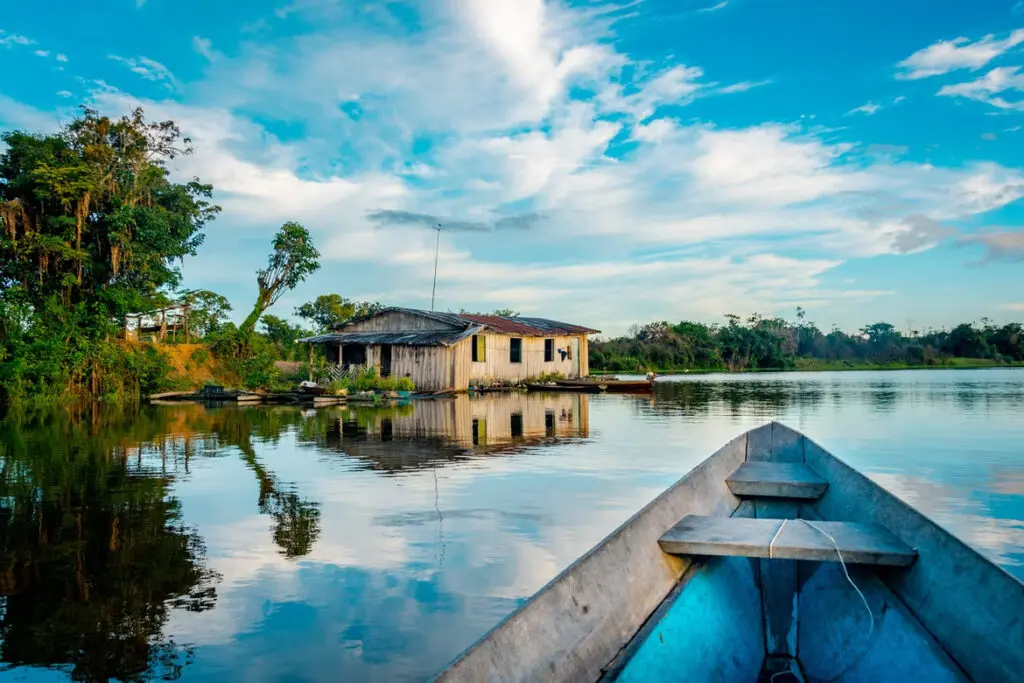
The world’s largest rainforest, the Amazon is home to an incredible diversity of plant and animal life. What to find there: monkeys, snakes, spiders, and other tropical creatures; the world’s tallest trees. Why it’s challenging: The dense jungle and humid conditions make travel here difficult and dangerous.
Travel Time
The best time to travel to the Amazon Rainforest is during the dry season, which runs from June to September. This is the best time to see wildlife and enjoy activities like hiking and canoeing. However, it is important to note that the Amazon Rainforest is a very large and diverse region, so the weather and conditions can vary depending on where you are.
Geographical Position
The Amazon Rainforest is a vast expanse of tropical forest that covers much of the Amazon Basin in South America. The Amazon is the world’s largest tropical rainforest, covering an area of 5.5 million square kilometers (2.1 million square miles). It is located in the countries of Brazil, Peru, Colombia, Venezuela, Ecuador, Bolivia, Guyana, Suriname, and French Guiana.
The Amazon Rainforest is home to an incredible diversity of plant and animal life, including many endemic species. The forest is also an important source of livelihood for the indigenous peoples who live there. The Amazon Rainforest can be divided into two main types of terrain: the lowland rainforest and the upland rainforest. The lowland rainforest is found at elevations below 1,000 meters (3,281 feet) and is the most extensive type of rainforest in the Amazon. It is characterized by a hot, humid climate with high rainfall. The upland rainforest is found at elevations above 1,000 meters (3,281 feet) and is less extensive than the lowland rainforest. It has a cooler, drier climate and receives less rainfall.
Both types of rainforests are threatened by deforestation, which is caused by a variety of factors, including logging, ranching, and mining. Deforestation is a major problem in the Amazon, as it results in the loss of habitat for the many plants and animals that call the rainforest home. It also contributes to climate change, as the trees of the rainforest play an important role in regulating the Earth’s climate.
3. The Sahara Desert
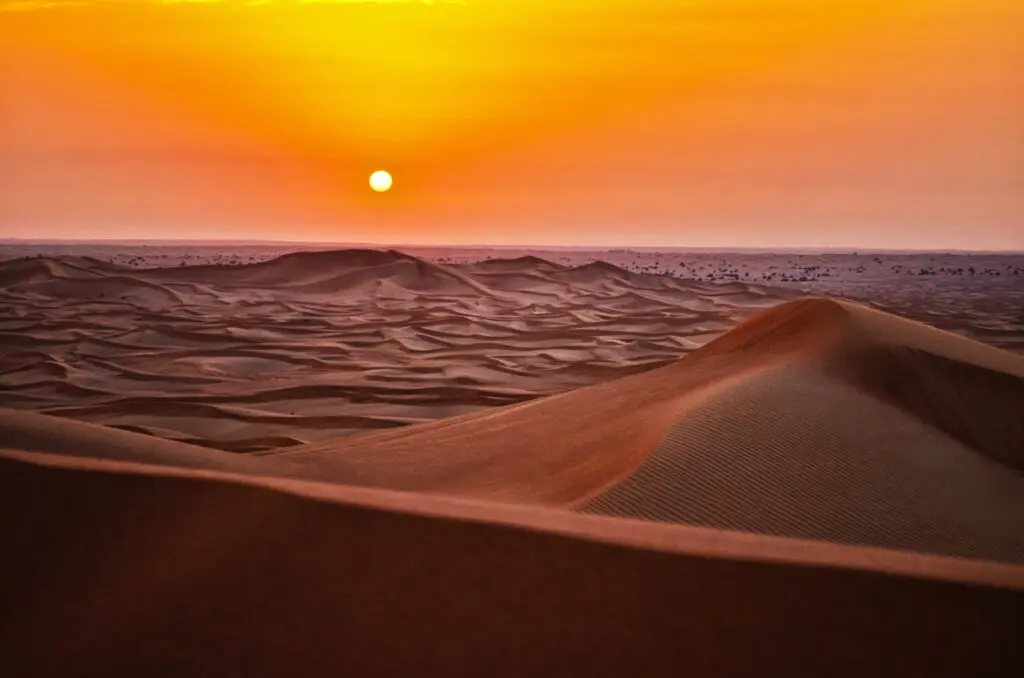
The world’s largest desert, the Sahara is a hot, dry, and unforgiving place. What to find there: camels, sand dunes, and ancient ruins. Why it’s challenging: The extreme heat and lack of water make travel here difficult and dangerous.
Travel Time
The best time to travel to the Sahara Desert is between October and March when the weather is cooler. Avoid travel during the hot summer months, as temperatures can reach up to 120 degrees Fahrenheit.
Geographical Position
The Sahara Desert is located in the northern hemisphere of Africa and covers an area of approximately 9 million square kilometers. The desert is divided into two main regions: the Sahara proper, which is located in the north, and the Sahel, which is located in the south. The Sahara proper is further divided into several sub-regions, including the Libyan Desert, the Algerian Desert, and the Tunisian Desert.
4. Mount Everest
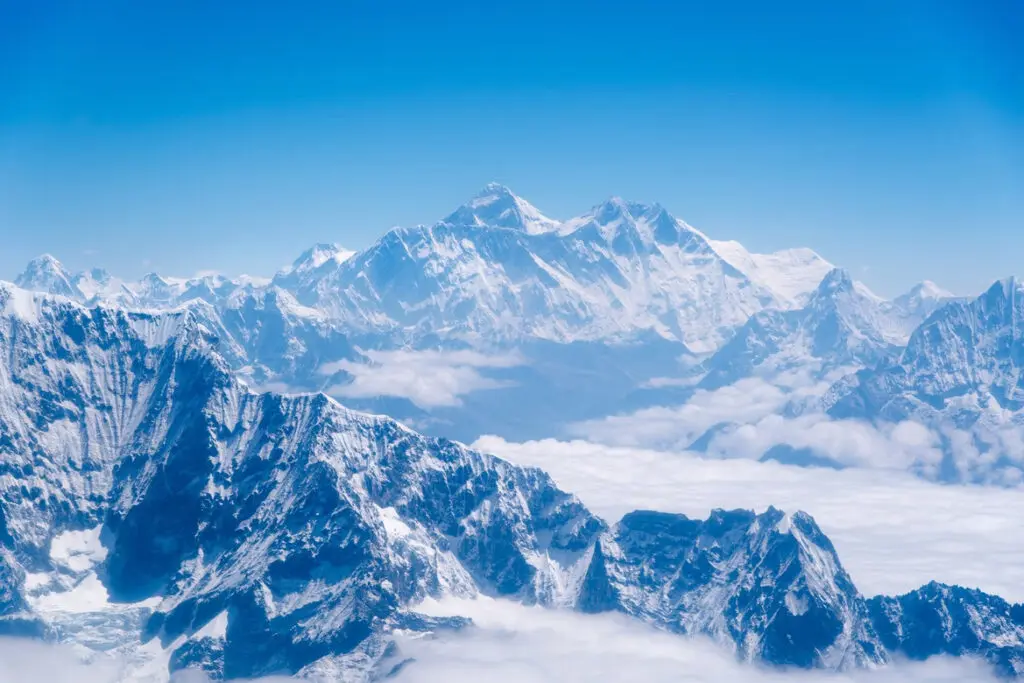
The world’s highest mountain, Everest is a challenging place to travel to for even the most experienced climbers. What to find there: stunning views of the Himalayas; the world’s highest peak. Why it’s challenging: The altitude and cold conditions make travel here difficult and dangerous.
Travel Time
There is no definitive answer to this question, as the best time to travel to Mount Everest depends on a variety of factors, including your personal preferences, the type of experience you’re looking for, and the weather conditions at the time of year. However, generally speaking, the best time to travel to Mount Everest is from late April to early May, when the weather is typically stable and the days are longer.
This time of year also coincides with the peak climbing season, so if you’re interested in summiting the mountain, this is the ideal time to go. Of course, conditions can change at any time and it’s always a good idea to check the forecast before you travel.
Geographical Position
Mount Everest is located in the Mahalangur Himal sub-range of the Himalayas. It is situated between Nepal and Tibet, with its peak in Nepal. The mountain is part of the Seven Summits and is the highest mountain in the world, with an elevation of 8,848 meters (29,029 ft).
Mount Everest has two main climbing routes, the Southeast Ridge from Nepal and the Northeast Ridge from Tibet. The Northeast Ridge is the more commonly used route, as it is easier to access from Tibet.
Mount Everest is divided into three main sections: the summit pyramid, the north face, and the south face. The summit pyramid is the highest point on the mountain and is where the majority of climbers attempt to reach the summit. The north face is a steep, icy slope that is considered to be one of the most challenging climbs in the world. The south face is a more gentle slope, and is the route most commonly used by climbers descending from the summit.
5. The North Pole

The world’s northernmost point, the North Pole, is a cold, remote, and unforgiving place. What to find there: polar bears, reindeer, and the Aurora Borealis. Why it’s challenging: The extreme cold and isolation make travel here tricky and dangerous.
Travel Time
There is no definitive answer to this question, as the best time to travel to the North Pole will vary depending on individual preferences and objectives. However, in general, the best time to travel to the North Pole is during the summer months (June-August), when temperatures are milder and daylight hours are longer. Keep in mind that the North Pole is a cold and hostile environment even during the summer months, so travelers should be prepared for extreme conditions.
Geographical Position
The North Pole is located in the Arctic Ocean, specifically in the northern hemisphere. It is the northernmost point on Earth and is surrounded by water. The North Pole is divided into two main regions: the Arctic and the Antarctic.
The Arctic is north of the Arctic Circle, while the Antarctic is south of the Antarctic Circle.
6. The South Pole
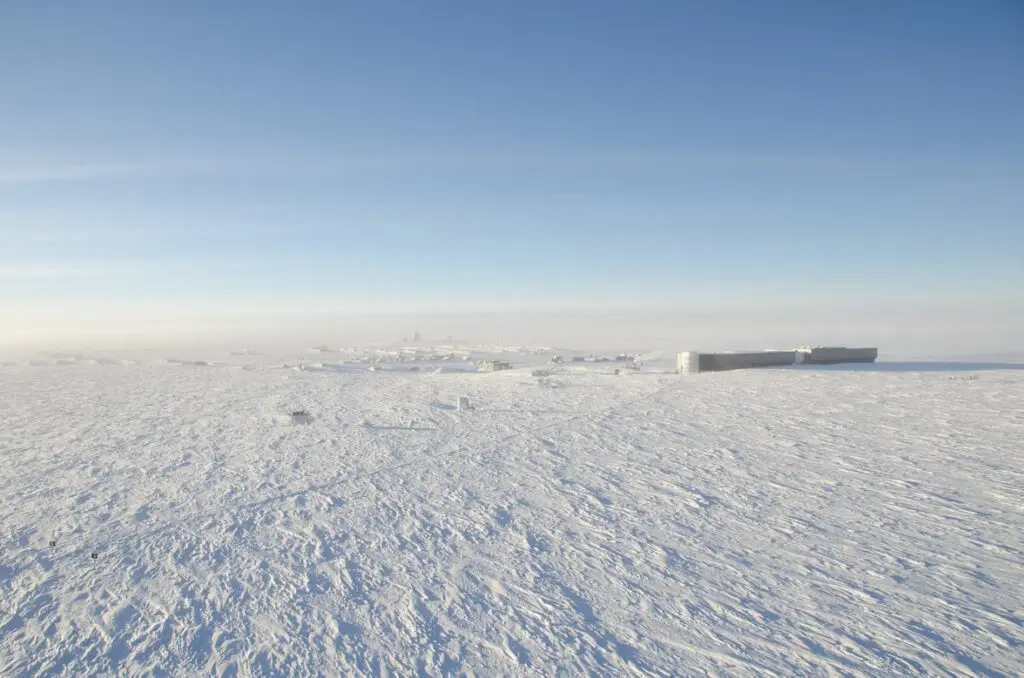
The world’s southernmost point, the South Pole, is a cold, remote, and unforgiving place. What to find there: penguins, seals, and the world’s southernmost point. Why it’s challenging: The extreme cold and isolation make travel here tricky and dangerous.
Travel Time
The best time to travel to the South Pole is from November to February. During this time, the weather is relatively stable, and there is less chance of experiencing extreme conditions. However, travel during this time can be expensive due to the high demand.
Geographical Position
The South Pole is located at the southernmost point of the Earth. It is situated in Antarctica, also known as the Geographic South Pole. The South Pole is covered in ice and is very cold. The average temperature is -58 degrees Fahrenheit. The South Pole is divided into two parts, the East Antarctic Plateau and the West Antarctic Ice Sheet.
7. Death Valley
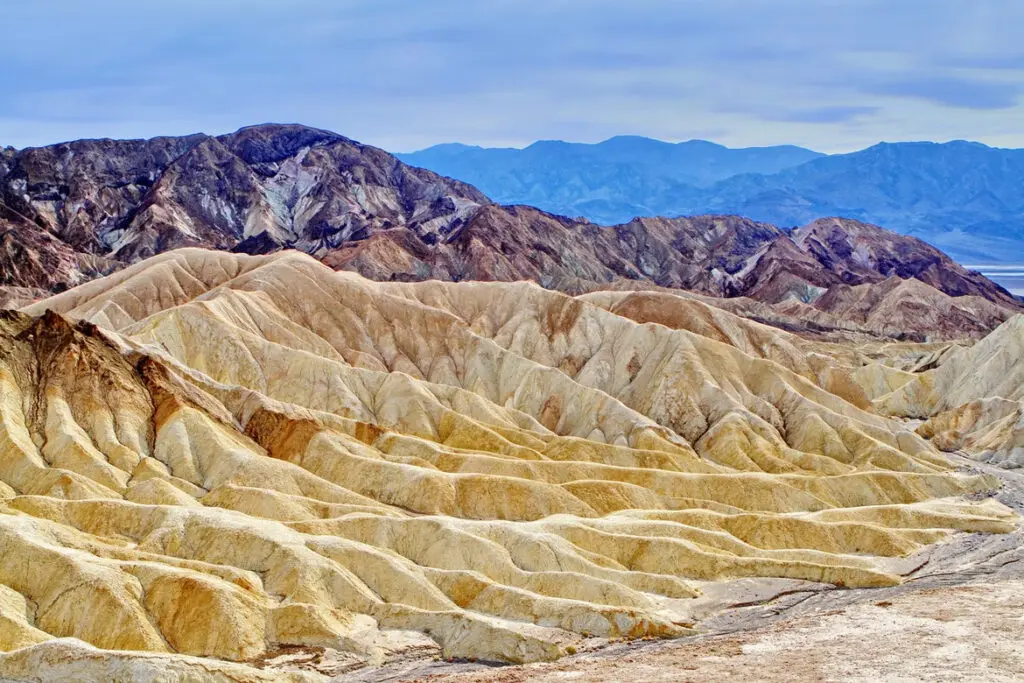
The world’s hottest, driest, and lowest point, Death Valley is a hot, dry, and unforgiving place. What to find there: Joshua trees, sand dunes, and the world’s lowest point. Why it’s challenging: The extreme heat and lack of water make travel here difficult and dangerous.
Travel Time
The best time of year to travel to Death Valley is during the spring or fall, when the temperatures are more relaxed. Avoid traveling there during the summer, when the heat can be unbearable.
Geographical Position
Death Valley is a desert valley located in Eastern California in the United States. It is one of the hottest and driest places in North America and is known for its extreme weather conditions. The valley is home to many different geographical features, including the Panamint Range, the Sierra Nevada Mountains, and the Mojave Desert.
Death Valley is divided into two main sections, the northern and southern parts. The northern part of the valley is home to the Panamint Range, while the southern part is home to the Sierra Nevada Mountains.
8. The Atacama Desert
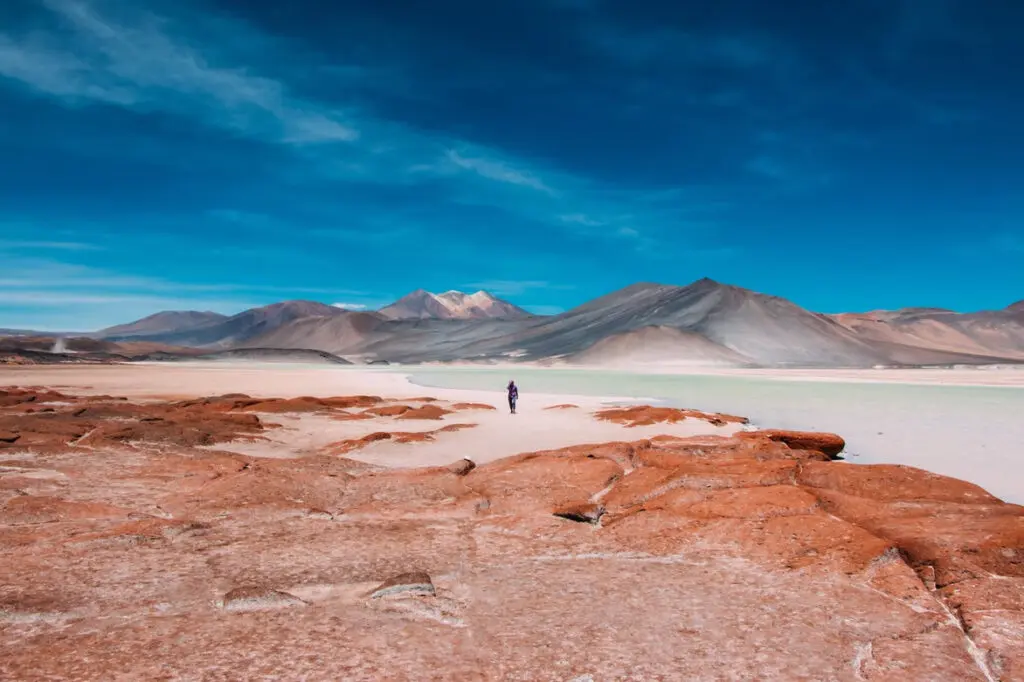
The world’s driest desert, the Atacama is a hot, dry, and unforgiving place. What to find there: llamas, geysers, and the world’s driest place. Why it’s challenging: The extreme heat and lack of water make travel here difficult and dangerous.
Travel Time
There is no best time to travel to the Atacama Desert, as the weather is dry and stable throughout the year. However, some months are busier than others, so it is important to plan your trip accordingly. December to February is the high season, as this is when most tourists visit the region.
April and May are also popular months to travel, as the weather is milder at this time. June to August is considered low season, as it is the winter months in the Southern Hemisphere. However, this is still a great time to visit the desert, as there are fewer crowds and the prices of accommodation and tours are often lower.
Geographical Position
The Atacama Desert is a large plateau in South America that covers parts of Chile, Bolivia and Argentina it is one of the driest places on Earth and is known for its dramatic landscape, which includes salt flats, volcanic peaks, and geysers. The Atacama Desert is divided into three central topographical regions: the coastal region, the high plateau, and the mountain range.
9. K2
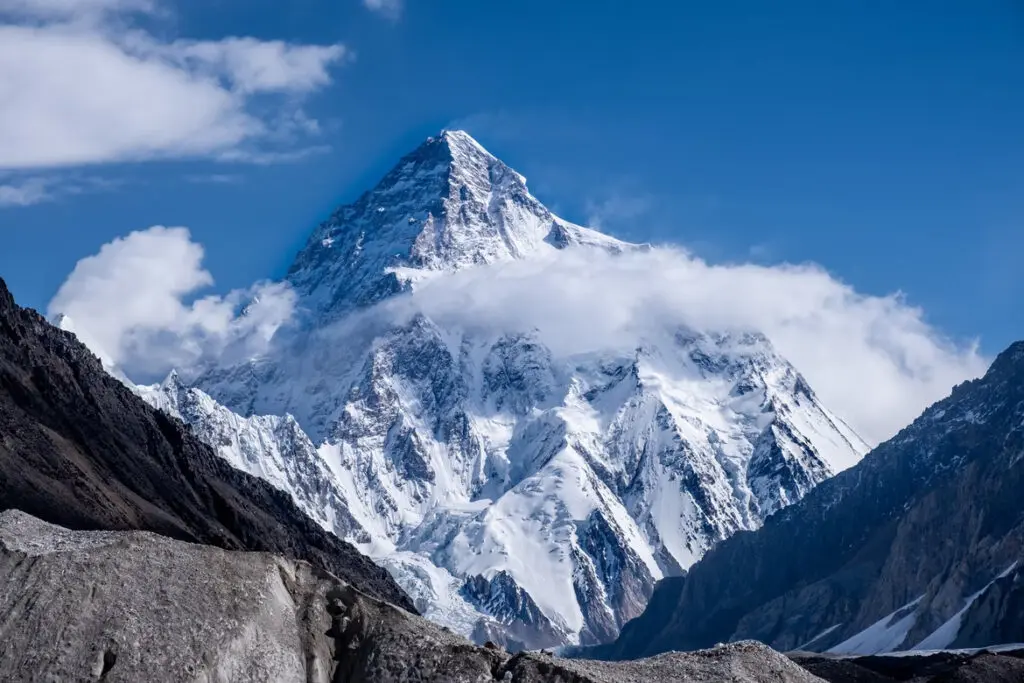
The world’s second-highest mountain, K2, is a challenging place to travel to for even the most experienced climbers. What to find there: stunning views of the Himalayas, the world’s second-highest peak.
Why it’s challenging: The altitude and cold conditions make travel here tricky and dangerous.
Travel Time
The best time to travel to the K2 is during the summer months of June, July, and August. During this time, the weather is generally more stable, and the days are longer, making it ideal for trekking and climbing.
However, travel during the winter months (November-February) can also be rewarding, as the views can be even more spectacular when the mountain is covered in snow.
Geographical Position
K2 is located in the Karakoram mountain range in the northwest of Pakistan. It is the second highest mountain in the world after Mount Everest and is often referred to as the “Savage Mountain” due to the difficulty of ascent. K2 is divided into four main sections: the Abruzzi Spur, the South Buttress, the West Ridge, and the East Ridge.
10. The Himalayas
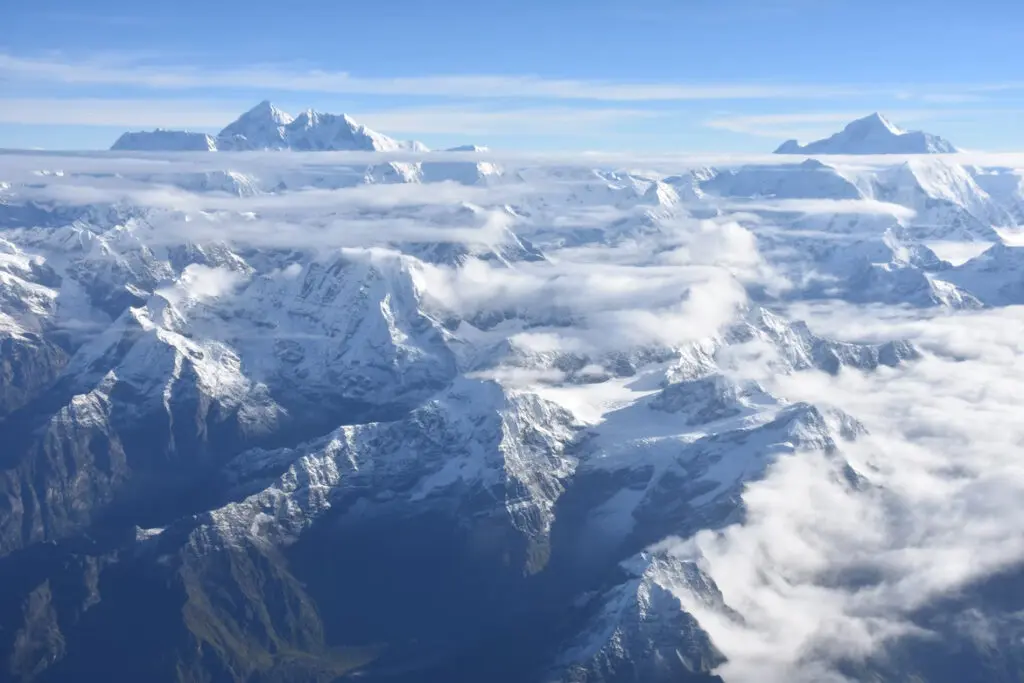
The world’s highest mountain range, the Himalayas are a challenging place to travel to for even the most experienced climbers. What to find there: stunning views of the mountains; the world’s highest peaks. Why it’s challenging: The altitude and cold conditions make travel here difficult and dangerous.
Travel Time
The best time to travel to the Himalayas is during the summer months, from June to August. The weather is warm and the days are long, so you’ll have plenty of time to explore. However, you may want to avoid the peak travel season if you’re not a fan of crowds.
Geographical Position
The Himalayas are a vast mountain range in Asia, spanning across Nepal, Bhutan, India, and Pakistan. The range stretches for over 2,500 miles (4,000 kilometers), making it one of the longest mountain ranges in the world. The Himalayas are home to some of the tallest mountains in the world, including Mount Everest, which stands at 29,029 feet (8,848 meters).
The Himalayas are divided into three main sections: the Greater Himalayas, the Lesser Himalayas, and the Outer Himalayas. The Greater Himalayas, also known as the High Himalayas, are the range’s highest and most rugged section. The Lesser Himalayas, also known as the Lesser Snowy Range, are lower in elevation and not as rugged as the Greater Himalayas. The Outer Himalayas, also known as the Siwalik Range, are the outermost foothills of the Himalayas.
Summary of Most Challenging Places to Travel on the Earth
There are many reasons to travel the world and explore its many different cultures and landscapes. For some, the appeal lies in the adventure and the challenge of visiting places that are off the beaten track. For others, the opportunity to immerse themselves in new and different cultures is the most appealing.
Whatever the reason, there is no doubt that traveling to places that are outside of your comfort zone can be an incredibly rewarding experience. It can push you out of your comfort zone and force you to confront your fears. It can also open your eyes to new and different ways of life and help you understand the world in a new light.
So, if you are looking for an authentic travel experience, never stop exploring the world. There is so much to see and so much to learn. And, who knows, you might just find yourself in the most unique and unexpected places.
Thank you for reading the Most Challenging Places to Travel on the Earth! You can find more World blogs or have a look at Desert Sand Color.
- A Milestone in North Korea Tourism: Russian Tourists Arrive - January 14, 2024
- Rediscovering China’s Skies: China International Flights Recovery - January 7, 2024
- Exploring the Philippines: A Record-Breaking Tourism in 2023 - January 7, 2024

